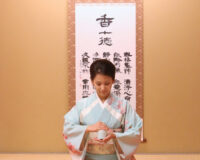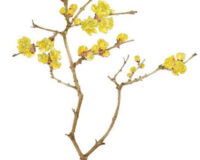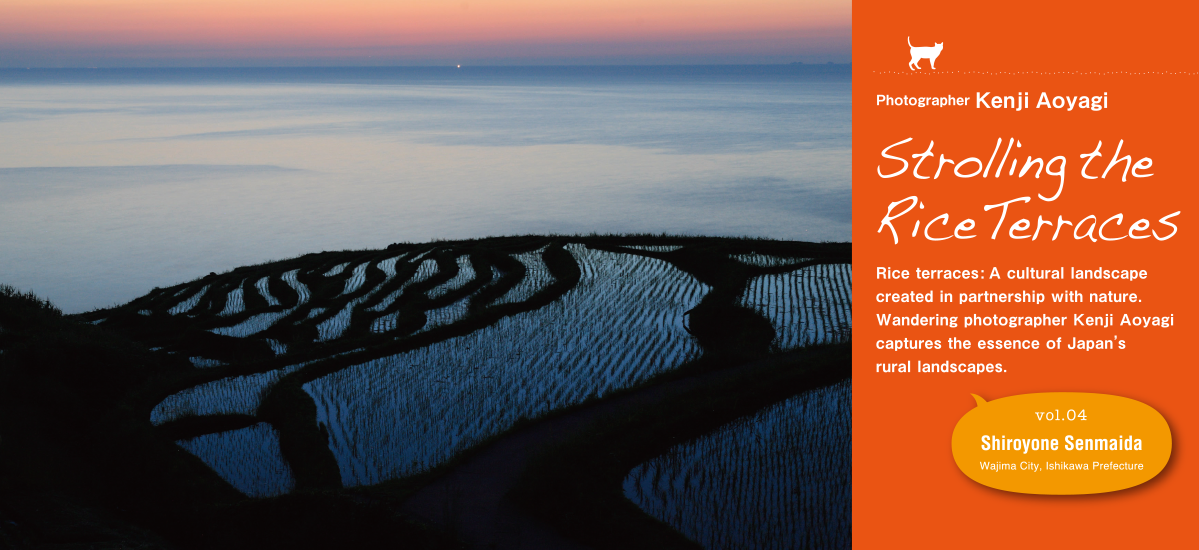
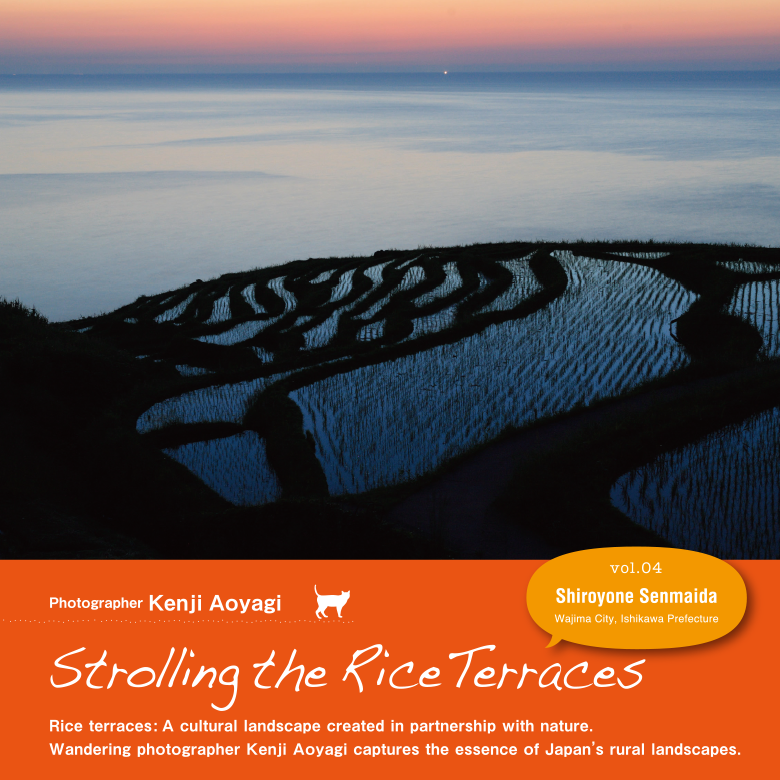
Rice terraces: A cultural landscape created in partnership with nature. Concern over the gradual loss of Japan’s terraced rice fields has been growing in recent years. Reasons for the abandonment of the rice terraces are said to be twofold. On the one hand, the consumption of rice in Japan has decreased since the Second World War as the Japanese have adopted a more Westernized diet. Along with that, a move towards mechanisation and efficiency in farming has made the growing of rice in secluded mountain areas economically unsustainable. Ironically, it is only since the rice terraces started disappearing that we have begun to recognise their importance. Wandering photographer Kenji Aoyagi captures the essence of Japan’s rural landscapes.
Photos and Text : 青柳健二 Kenji Aoyagi / English Version : Judy Evans
Keyword : Rice Terraces / Farming / Horticulture / Shiroyone Senmaida / Noto Peninsula / Ishikawa Prefecture
Something for Every Season
The changing landscape at Shiroyone Senmaida attracts photographers and sightseers all year round. The rice fields are flooded in late April, with rice planting taking place in early May. At this time of year, the brilliant scarlets and magentas of the sunrise and sunset are reflected in the waters a thousand tiny ponds, stepping down the hillside.
Later in the year, the bright green of the rice plants in the glare of the summer sun is almost dazzling. Then in autumn, nodding ears of rice, their grains plump and ready for harvest, paint the hillside golden.
Winter offers the kind of landscape only found on the Noto Peninsula, with the clearly delineated terraces of the stark hillside alongside with the bleak and stormy Sea of Japan. From October to March, visitors who stay until after dark are delighted by the sight of over 21,000 solar LED lights illuminating the terraced embankments.
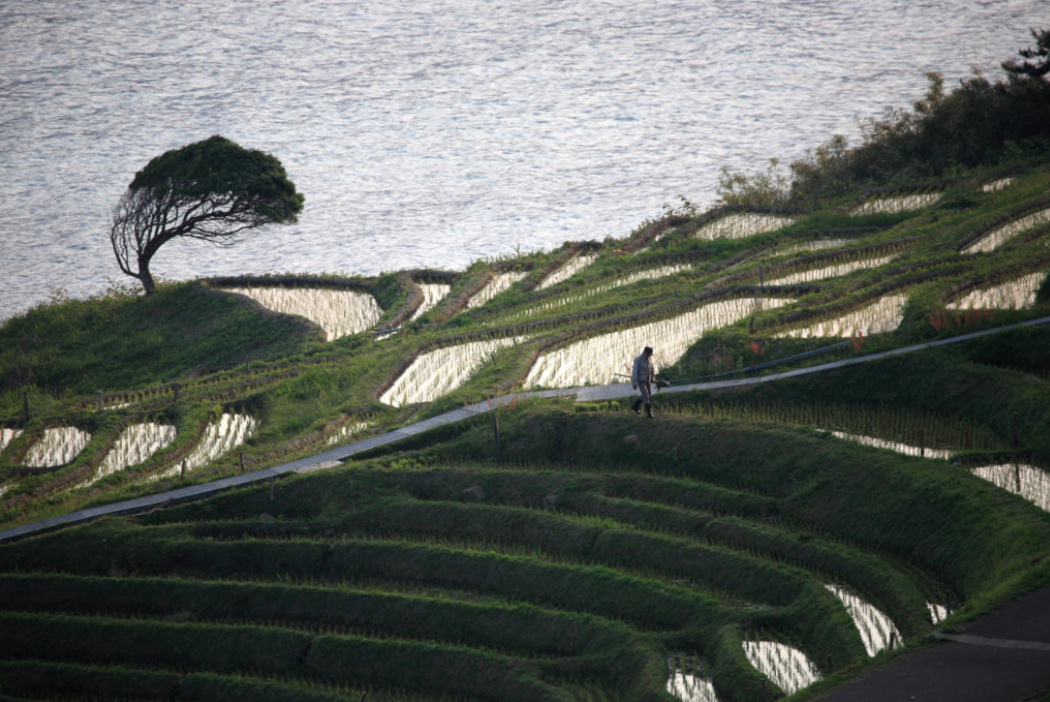
Official Recognition and Conservation Measures
The past two decades have seen increased efforts to preserve and sustain traditional rice terraces across Japan, including Shiroyone Senmaida. The rice terraces at Shiroyone were designated as a national cultural property and place of scenic beauty in 2001. Ten years later, in 2011, Shiroyone Senmaida became part of Japan’s first Globally Important Agricultural Heritage System (GIAHS) under the umbrella of the Noto Peninsula Satoyama Satoumi project, a collection of socio-ecological land and sea-based systems that have supported the people of this area for centuries.
A GIAHS is an evolving system of human communities in an intricate relationship with their environment. The purpose of the GIAHS designation is to ensure the maintenance and preservation of these systems so that they can be passed on to future generations.
Traditional Methods and Modern Initiatives
Old fashioned, traditional farming methods are employed in the cultivation of rice at Shiroyone Senmaida, including the reestablishment of rice seedling beds, or nawashiroda. Every year the tops of the higher embankments are shaved down and the soil added to the fields, providing additional topsoil. The terraces require only half the amount of fertiliser as ordinary rice fields, and there is far less damage from plant disease and insects. Importantly, consumers report that the rice from Shiroyone is exceptionally delicious.
For all that Shiroyone Senmaida is a place of outstanding scenic beauty, these rice terraces still face the same challenges as rice terraces elsewhere in Japan. These challenges include an aging farming population without successors, the difficulty of using machinery, and the high cost of cultivation. To address these challenges, Wajima City has designated Shiroyone Senmaida as a sight-seeing area and is making conservation efforts throughout the area.
One initiative is the Shiroyone Senmaida “owner system”, instigated in 2007 to preserve the landscape value as well as the local traditional cultural and educational function of the rice terraces. The owner system members are mostly urban dwellers who visit the site a few times every year to participate in land care and farming activities. Through this hands-on experience, as well as by interacting with the local farming families, city folk come to appreciate the hard work of generations of farmers before them, as well as the joy of producing their own food and the value of each and every grain of rice.
Establishing a fun, farmwork atmosphere is an important element in the preservation of the rice terraces as a tourist attraction. There’s somewhat of a festival atmosphere in autumn as volunteers help with the rice harvest. Shiroyone Senmaida even becomes the venue for traditional wedding ceremonies, adding a unique element of local culture to this time-honoured farming landscape.

A Uniquely Japanese Landscape
There are rice terraces all across Asia and as far west as Madagascar and Uganda. However, having travelled the world photographing these rice terraces, I’ve noted that there are very few places where they can be found right next to the sea as they are here in Shiroyone. In Bali for example, because the land slopes very gently towards the coast (or ends in abrupt cliffs) rice fields near the sea are flat rather than terraced. The only other place I’ve found coastal rice terraces is on Namhae Island on the southern tip of South Korea.
Coastal rice terraces would then seem to be an almost uniquely Japanese landscape; a way of making the most of the hilly terrain of this narrow island country. In Japan, rice terraces tend to be found on west-facing slopes where exposure to the afternoon sun is maximised. They are more commonly found on the western Sea of Japan coast than on the Pacific Ocean side, where there is a higher risk of salt damage to the growing rice plants from the Pacific breezes in summer.
Centuries-old Origins
The history of Shiroyone Senmaida can be traced back at least as far as the Edo Period, when the Noto Peninsula became part of the Kaga Domain. Documents from that time refer to the village of Shiroyone as being the location of newly developed rice fields and salt fields for salt-making.
There are a couple of theories as to the origin of the name “Senmaida”, which literally means “a thousand rice fields”. Because there are 1,004 tiny terraces here at Shiroyone, each one measuring around eighteen square metres, it is generally accepted that this number is the origin of the name. However, some believe that the name is a corruption of the phrase, “semai da”, meaning “tiny fields”.
Not only does this collection of tiny rice fields form an outstandingly beautiful landscape with a unique history, Shiroyone Senmaida even has its own folktale to memorialise the tiny terraces!
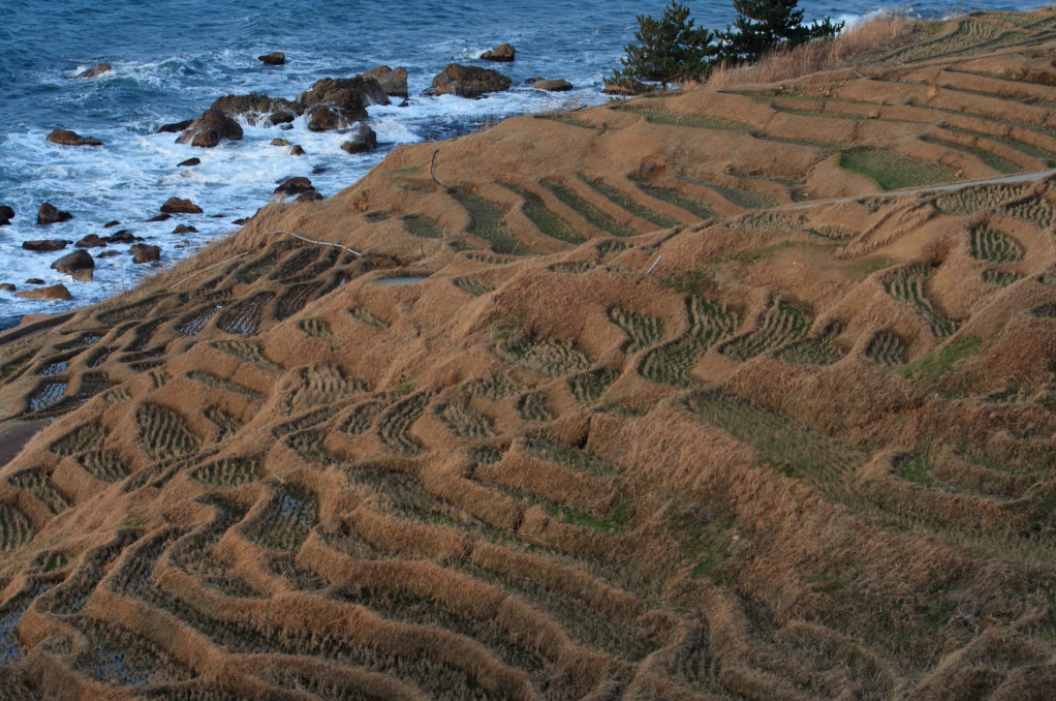
The Tale of the Raincoats and the Missing Rice Fields
“Once upon a time, long, long ago, a farmer and his wife were planting rice. Finishing for the day, they decided to count the fields, just to be certain. Now, these two knew very well that there ought to have been a thousand fields but no matter how many times they counted, there were always two fields missing.
Before long it had become too dark to see, so the pair decided to give up and go home. They picked up the straw raincoats that they’d each placed on the ground that morning, and there, hidden under their raincoats, were the two missing rice fields!”




